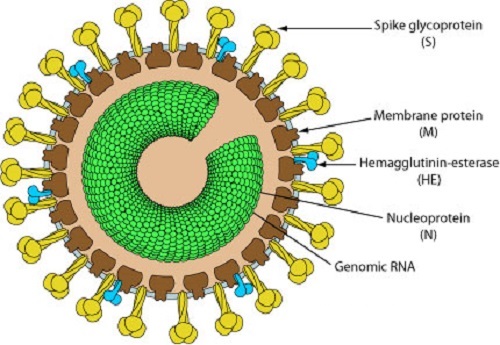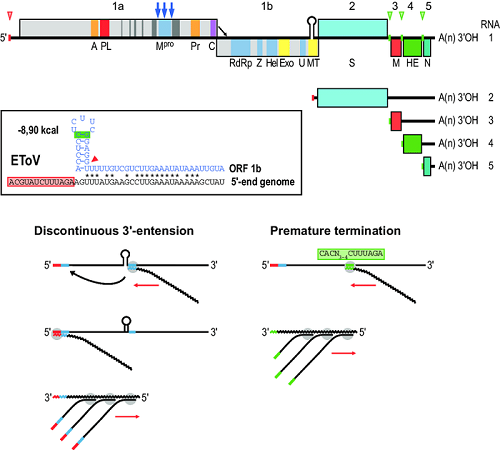Torovirus - Classification, Morphology, Genome, Epidemiology
Classification of Torovirus
The Torovirus can be classified as:
Realm: Riboviria
Kingdom: Orthornavirae
Phylum: Pisuviricota
Class: Pisoniviricetes
Order: Nidovirales
Suborder: TornidovirineaeFamily: Tobaniviridae
Subfamily: Torovirinae
Genus: Torovirus
The genus Torovirus contains three species:
Bovine torovirus
Equine torovirus
Porcine torovirus
Characteristics of Torovirus
Torovirus primarily infects vertebrates- especially humans, cattle, pigs, and horses. In 1972, the virus was isolated from a horse in Bern, Switzerland. The human torovirus is associated with gastroenteritis.

Fig: Torovirus morphology (Source: Wikipedia)
Morphology, Genome of Torovirus
Morphologically, Torovirus is enveloped, spherical, and about 120-140nm in diameter. The tubular nucleocapsid is bent into an open torus hence the name ‘torovirus.’ The Torovirus genome is RNA that is infectious and serves as both the genome and viral messenger RNA (positive single-stranded RNA).

Fig: Torovirus genome (Source: ReserchGate)
Epidemiology to Torovirus
Epidemiologically, in 1972, a Torovirus was isolated from a horse in Bern, Switzerland.
Bovine Torovirus (earlier known as Breda virus) was isolated for the first time from stools of neonatal diarrheic calves in Breda, Iowa, in 1982 during an outbreak of neonatal calf diarrhea, in which 15% of the affected animals died
Since then, Torovirus has been detected and confirmed in ungulates (goats, sheep), horses, pigs, rodents, domestic cats, and other potential hosts including human beings, especially in children in several countries